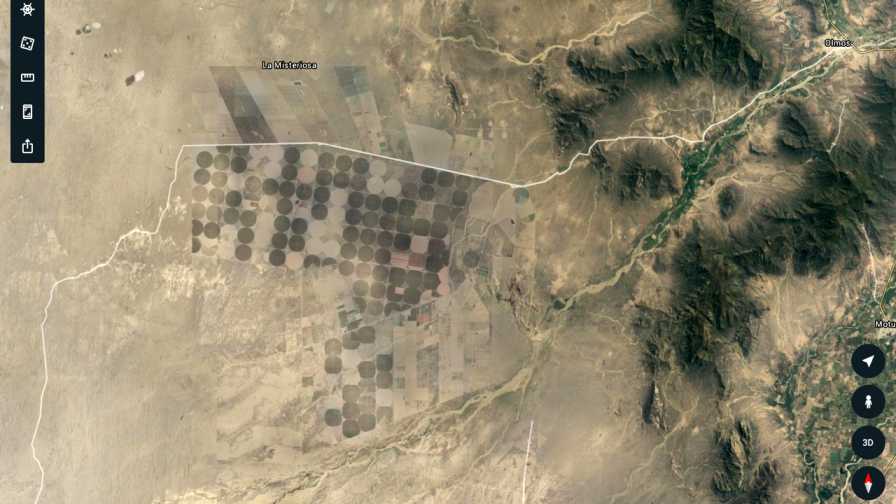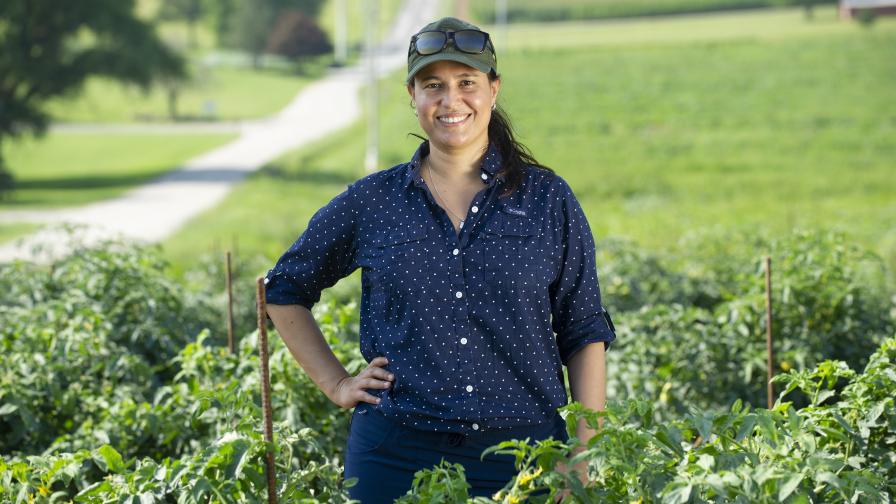New Water Projects Help Peru Power up Specialty Crop Growth

The first water project near Olmos in Northern Peru can be seen from space. The irrigation area covers nearly 100,000 acres.
Image courtesy of Google Earth
Peru is next in line to become a juggernaut producer of specialty crops from South America. It has quickly risen as a top exporter of numerous crops.
While not directly impacting Florida producers yet, it is making other specialty crop growers take notice in other parts of the country.
Blueberry Boom
Last season, blueberry growers in Michigan, Oregon, and Washington felt the impact of Peruvian blueberries during the end of their market window. This has brought these growers to the table in talks about trade protections.
Recently, Rabobank released a whitepaper on the burgeoning agricultural industry. David Magaña, Senior Horticulture Analyst for the company, says blueberry production in the country is growing exponentially.
“Last season, Peru was the No. 2 exporter of blueberries and will probably overtake Chile for the No. 1 spot next season,” Magaña says. “We were estimating 20% lower prices for blueberries last fall but were underestimating shipments coming out of Peru [which reduced prices further]. And, they are planting more and more.
“The blueberry yields have been impressive, as well. We visited a farm there that produced 16 tons per acre in the first year. The average U.S. yield is about 11 tons per acre [in mature crops]. They have a long growing season (being near the equator) and enjoy about 12 hours of daylight year-round, so crops develop faster. They start producing fruit in August all the way into February.”
Irrigation Projects
Magaña says massive water projects are and will continue to fuel the growth. Water has been the limiting factor in Peru. The Andes Mountains run through the country. Snow melt naturally flows down into the Amazon basin, but eight irrigation projects aim to divert some of that water to the desert coast of Peru.
“The first project in Northern Peru is completed and will enable cultivation of nearly 100,000 acres,” Magaña says. “They are growing a lot of table grapes, avocados, asparagus, and blueberries there. The country plans to complete two more projects in the next three years.”
Magaña says the farms in the completed water project are larger operations. “The land and water rights are sold in 1,000-hectare plots. Some of the farms are operated by American-based companies.”
Product is trucked to the ports in Peru and shipped to various destinations. The country is making improvements to the ports and road infrastructure. A new large packing facility opened for this season in the water project area.
“The agricultural area is about three hours away from the nearest city, so they are currently busing workers in to work on the farms,” Magaña says. “They are planning to build a city to house workers near the project. They have a huge labor cost advantage, paying workers about $12 per day. But we expect they will run into some labor availability challenges as new [water project] areas come into production and begin competing for labor.”










